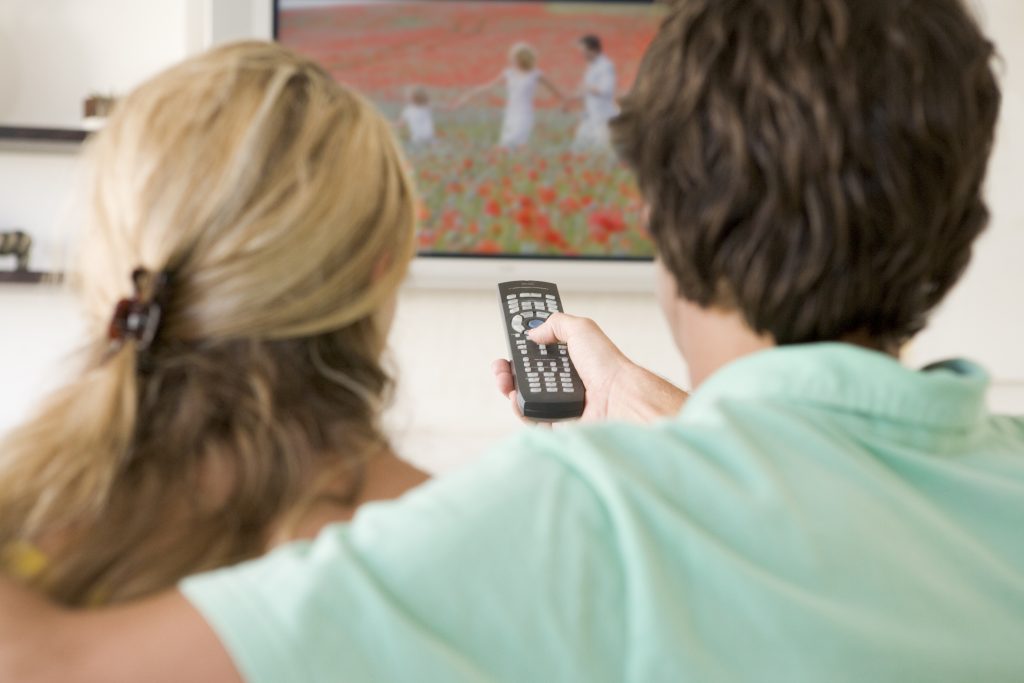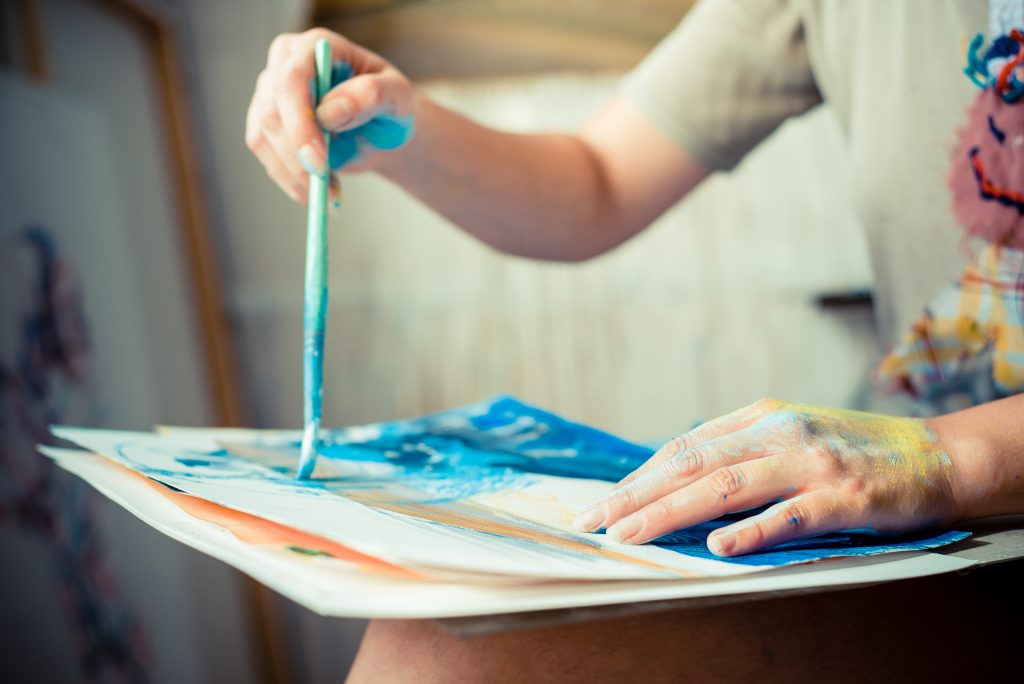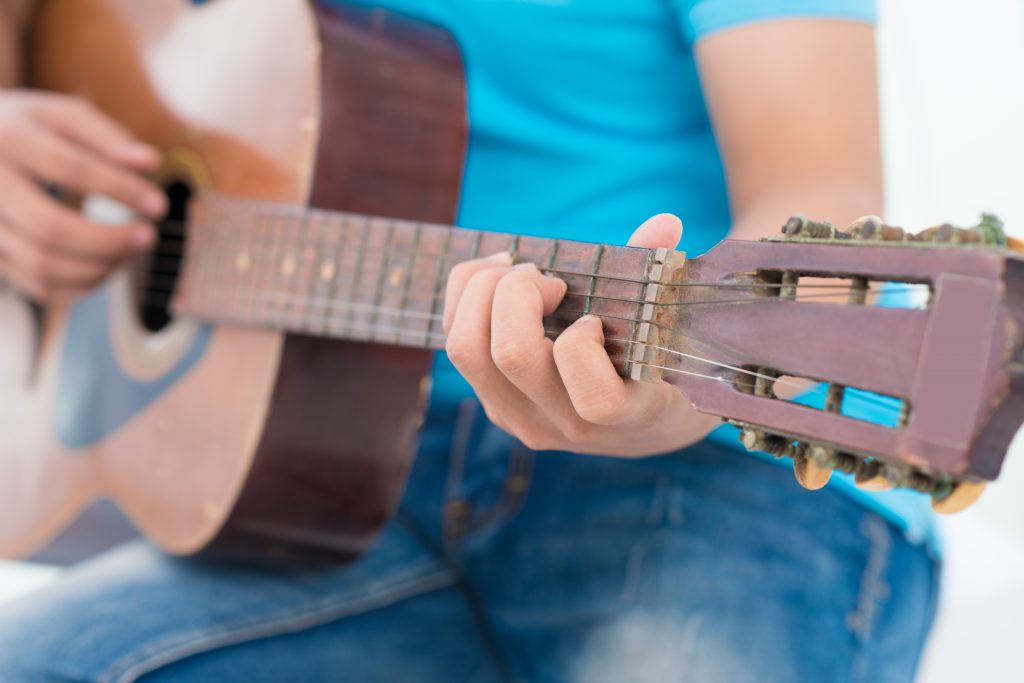This content was medically reviewed by Baher S. Yanni, MD, on February 21st, 2022.
Hobbies add excitement and fun to life. Whether it’s a sport, relaxing diversion or art form that brings you enjoyment, you don’t want to give it up, even if it causes pain. Because hobbies require regular practice, repetitive actions can eventually add stress to joints and compress nerves. The neck and back sustain the bulk of pain due to seated positions and intent leaning toward your project.
Arthritis, for example, may eventually affect your hands because of your favorite hobbies. Michelangelo even described pain and possibly osteoarthritis from practicing his art, but simple joint pain comes out in many other ways in other parts of the body. No matter how or why it develops, though, pain keeps people from pursuing their hobbies which can cause sadness and social limitations, especially with immobility in back pain.
You hold steady positions and perform constant motions for hours to perfect your form and the results. But which hobbies create the most serious pain? And is the pain traceable to a certain motion or a wrong movement? Let’s take a look at the following 12 hobbies that can overwork the neck, back and certain joints.
1. Traveling or Driving
Visiting new places and seeing faraway sights is an activity that excites adventurers and tourists. However, traveling means you will likely be carrying heavy bags and luggage around the airport, to hotels and in between your sightseeing excursions. Laptop cases or heavy duffel bags can put unbalanced pressure on your shoulders which could result in rotator cuff injuries and shoulder pain.
Sitting on a plane, in the airport, on a train or on a bus can all contribute to back pain, too. Backpacks, a simple carry-on option, press on your spine and can increase the likelihood of intervertebral disc issues and herniated discs. Driving also can cause spine and neck pain, especially on long trips. Strained neck muscles can hurt intensely when you move in certain ways and directions, and busy traffic is one instance where you might need to crane your neck. If your car’s seating is insufficiently cushioned or isn’t adjusted correctly, your posture suffers, too. Pad your seating to support the natural curve of your spine and try not to slump over while driving.
2. Golfing
Golf is a favorite hobby for socializing and networking, and while it is not considered a high-impact sport, the full-body swinging action can negatively affect joints and the spine. Golfer’s elbow, for example, which is similar to tennis elbow, inflames the tendons around the elbow joint from repeated swiveling motions. The medical term is medial epicondylitis. The forearm tendons on the inside may tear and send waves of pain all the way to the hand.
Several factors increase the possibility of golfer’s elbow. Frequent golfing for extended periods means the wear on the elbow can form an overuse injury. If you have poor form or older and heavier golfing irons, golfer’s elbow is likely to occur. Because the full swing extends back and neck muscles, too, the spine can twist uncomfortably and cause pain. Review the correct swinging technique and take frequent breaks while golfing to help prevent developing golfer’s elbow.
3. Tennis
Tennis brings out the competitive nature of many, and it is a sport that requires jumping and rotating arm movements. Tennis elbow can develop from repeated twisting and moving — just like golfer’s elbow. The outside of the elbow tendon reacts in the same way, inflaming and tightening to the bone. The raised bony part of the elbow is what the tendon latches onto. The forearm, wrist and hand suffer when the elbow develops this painful condition.
The pain makes it difficult to grip, hold or twist pieces of equipment with your hands. Low back pain is a regular occurrence for tennis players as well, especially after serving mishaps. The pelvic twist when the player swings can result in an acute injury. Correct any mistakes in your form so you protect your back and elbows from further injury.
4. Playing Video Games
Gaming is such a popular hobby that it has turned into a high-paying job for some people. However, most people just use their spare time to level up on their Xbox or PlayStation. Video games can create problems for the neck and back, but they can also cause injury to the joints in the hands. The intensity of the game pulls people in, and leaning or hunching forward, usually on a couch, does not promote healthy posture. Spinal alignment is often disrupted, so neck and back pain occurs.
Carpal tunnel syndrome plagues many gamers because the repeated hand and wrist motions for long hours produce overuse injuries. Even adolescent gamers report finger pain and wrist pain that prevents them from continuing their hobby. Repetitive strain injury can damage soft tissue, and in the case of video games, the hands and wrists can develop this or other conditions after extended and continuous motion. Take breaks from playing video games to give your wrists and back a chance to stretch and rest.
5. Watching TV
TV and other electronics that involve whatever position you choose and little movement are dangerous for your spine and neck. Watching TV on the couch insufficiently supports your back. Most people slouch down or curl up to binge watch shows for hours. These positions reshape your spine the longer you hold them, which diminishes the ability of back muscles to support the spine and can cause compression of the wrong parts of the spine.
Other hobbies in electronics, like any kind of computer and laptop activities, distort your neck’s neutral position. Holding one position for extended hours is detrimental to your back and leads to discomfort. The pressure of a strained position risks discs weighing down too heavily, possibly on nerves. A sedentary lifestyle increases the risks for serious back conditions and even decreases your lifespan. Get up from your seated position to take periodic walks and stretches.
6. Sewing and Knitting
Sewing and knitting are productive and creative interests, but the detailed work and required attentiveness of these activities can lead to lower back and neck pain. Hunching over a sewing machine and continually bending and craning your neck to examine the stitching or the details of the pattern can cause stiffness in the neck and upper back. Additionally, textile crafts often overwork the hands and pain develops. Like any other hobby that includes precise and repetitive hand movements, wrist and finger pain is prevalent.
Carpal tunnel syndrome and tendinitis are likely to occur with high participation in these crafts as well. The carpal tunnel is located around the palm and wrist area, and if the median nerve is restricted and overused, weakness and odd sensations occur. Carpal tunnel syndrome may even produce tingling or numbness. Tendinitis is when irritation in the wrist’s tendons is compromised from constant and regular motions. Either of these conditions makes it challenging and painful to continue sewing or knitting, but stretching and occasional rest lessen the stress on these areas.
7. Weightlifting
Weightlifting is a hobby that can strengthen and build muscle. Because posture and technique protect your back and shoulder joints while you lift, though, a slip from proper form can result in painful symptoms. Lower back pain is a common consequence of rounding your back or failing to square your shoulders. Hyperextension can damage the lumbar section and add to lower back pain, too.
Following correct form when lifting weights can keep spine and joint pain at bay. When deadlifting, a move that risks extensive weight coming down on the shoulders and spine, lock your shoulders and create tension in your core. Loose shoulders put more strain on your spine in weightlifting, which can lead to herniated discs, so brace them for the extra weight — both with core strength and weightlifting belts if you’re lifting higher amounts of weight.
8. Painting
Painting rooms in your house, large-scale art or even a smaller canvas in a class is a relaxing activity that allows you to express yourself. However, these settings can also put your back, rotator cuffs, elbow joints and wrists at risk for injury. Painting a room or the outside of a house, for example, uses an overhead arm action that can stress the rotator cuff and potentially cause an overuse injury — tearing the ligaments surrounding the shoulder joint.
Large canvases that require swinging brush strokes can produce the same injuries as painting a room, but small-scale works can also lead to injury if you’re not careful. Sitting at an easel for many hours at a time in the same position can stiffen the back, like most sedentary postures do. No matter the size of the canvas and scale of the project, lower back pain can develop as well as wrist and elbow pain. Additionally, you might encounter tennis elbow — despite the name, it can happen when gripping something like a paintbrush for long periods as well.
9. Gardening
Gardening is a beloved activity where you can manicure bushes and flower beds or cultivate vegetables, but it also takes a lot of effort and manual labor. Shoveling, pulling weeds and lifting potted plants easily strains the back and neck. Bending forward continuously can be especially detrimental, putting pressure and strain on the spine. As well, bending down from the waist to reach a tool can strain the lower back.
Eventually, motions like this can compress the lumbar portion, and serious back issues that extend pain down the legs may develop. Support the back by lifting from the legs and offsetting extra weight that could rupture the discs in your spine. Build up back strength by kneeling or squatting rather than folding over from the hips to tend to a flower bed. Stretch before and after gardening to keep a sore back and stiff neck from disrupting your favorite hobby.
10. Jogging and Hiking
Jogging and hiking are healthy practices that get people moving and promote fitness. A round of cardio, like jogging, tones muscles, but it may contribute to joint pain. Runner’s knee or patellofemoral pain syndrome has many causes but is defined as pain around the kneecap. The knee joint sustains continuous impact if you run regularly, and an overuse injury is a typical way to develop runner’s knee. Prior knee injuries and surgeries also lead to pain in the kneecap, and the risk for runner’s knee is more likely when there’s a history of previous knee conditions.
Hiking also impacts the knee joints, and the mixed terrain may be even rougher on ligaments and muscles. In many cases, the outer knee receives extra weight, and iliotibial band syndrome, a rarer form of runner’s knee, occurs and hurts the connection between the knee and hip. Hiking back down mountains and hills often causes this to happen, and when you brace yourself at an angle for downward slopes, the outer part of your knees sustains pressure. To help avoid experiencing these conditions, be sure you warm-up before your run or hike and stretch afterward, maintain the strength in the leg muscles, such as the quadriceps and thighs, wear appropriate footwear and avoid sudden changes in movement intensity.
11. Playing Guitar
Strumming a tune is a popular activity, and you might not typically expect pain from a musical hobby. However, tendinitis, shoulder pain and cubital tunnel syndrome can all occur when the repetitive movements of chord changes and strumming strain your arms. Cubital tunnel syndrome is a condition where a nerve in the elbow is overstretched or compressed. The nerve close to the funny bone is what bears the brunt of guitar playing, which makes this a common source of pain for guitar players.
Tendinitis from guitar playing is when inflammation affects the tendon. Chronic tendon pain can also happen after extensive instrument practice. Pain in the shoulder joint may be from a rotator cuff injury from vigorous strumming. Wrist, shoulder and elbow issues from instrument playing require routine stretching after long sessions or performances.
12. Reading
Reading is a form of entertainment that expands your mind and doesn’t seem to use many muscles. But anyone who reads often knows that even the best posture and little movement can result in stiffness, neck pain and strained hand joints. Holding a book open can cause finger and wrist pain, and carpal tunnel syndrome may occur from simply propping open a good novel.
Reading includes leaning in to see the text and sometimes hunching over, which causes neck pain, spine issues and back pain. A resting posture should still keep your spine alignment correct and elevated, so your lumbar discs do not take more weight than necessary. Putting your book at eye level may save you from neck pain, but it could place more strain on your hands and wrists. Be sure you have correct posture, spinal and hand support when you’re reading, and getting up and changing positions can help avoid soreness in the back, hands, neck and wrists.
Leading Practitioners in Spine Procedures
If your hobbies are causing you joint, neck and back pain, you may correct your form or postures before serious problems arise. But if your pain is debilitating or a chronic condition, you could receive relief from a procedure or treatment. Spine procedures can reduce your pain and get you back to the activities that enrich your life and bring you joy.
The Spine INA is a leading practitioner in the least invasive techniques to restore your spine and stop the pain from getting in your way — and get you back to your sports, favorite art forms and other hobbies with limited recovery time. Each part of our process is staffed with helpful and personable individuals who desire to inform you about treatments, provide and execute the best practices and work with you through your care path.
Especially in endoscopic discectomy, endoscopic facet rhizotomy and spinal cord stimulation, our physicians are skillfully trained and educated in state-of-the-art techniques. Contact us today to learn how you can alleviate your pain and revive your life.
This content was medically reviewed by Baher Yanni, M.D, on February 21st, 2019.
Resources
- https://www.health.harvard.edu/blog/michelangelos-hands-can-cant-tell-us-arthritis-201607139960
- https://www.ncbi.nlm.nih.gov/pmc/articles/PMC5914385/
- https://www.ncbi.nlm.nih.gov/pmc/articles/PMC4608778/
- https://www.mayoclinic.org/diseases-conditions/golfers-elbow/symptoms-causes/syc-20372868
- https://www.ncbi.nlm.nih.gov/pubmed/23877374
- https://www.businessinsider.com/highest-paid-professional-gamers-in-the-world-2015-9
- https://www.webmd.com/children/news/20091019/video-games-may-cause-kids-pain#1
- https://rsi.unl.edu/
- https://www.ncbi.nlm.nih.gov/pmc/articles/PMC4960753/
- https://www.mayoclinic.org/diseases-conditions/carpal-tunnel-syndrome/symptoms-causes/syc-20355603
- https://www.livestrong.com/article/299203-back-pain-after-lifting-weights/
- https://www.mayoclinic.org/diseases-conditions/patellofemoral-pain-syndrome/symptoms-causes/syc-20350792
- https://www.webmd.com/pain-management/it-band-syndrome
- https://www.assh.org/handcare/hand-arm-conditions/cubital-tunnel
- https://www.berklee.edu/bt/142/overuse_injuries.html
- https://www.health.harvard.edu/pain/do-habits-cause-your-neck-pain













Thanks I am a mother and very busy! This helped me alot!
Thanks for sharing information. I enjoyed reading the blog. Keep on sharing!
Thanks, Neil!